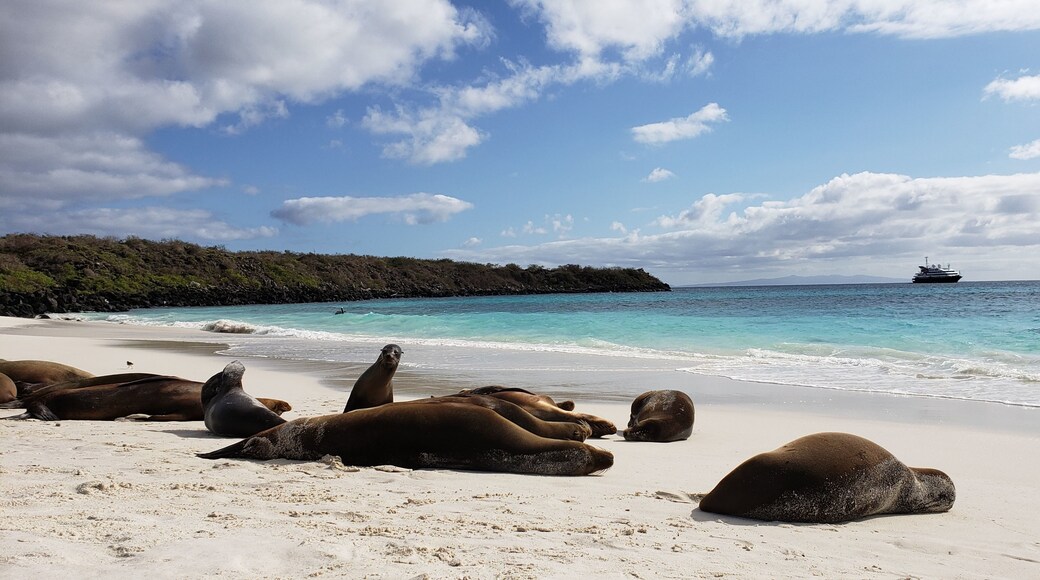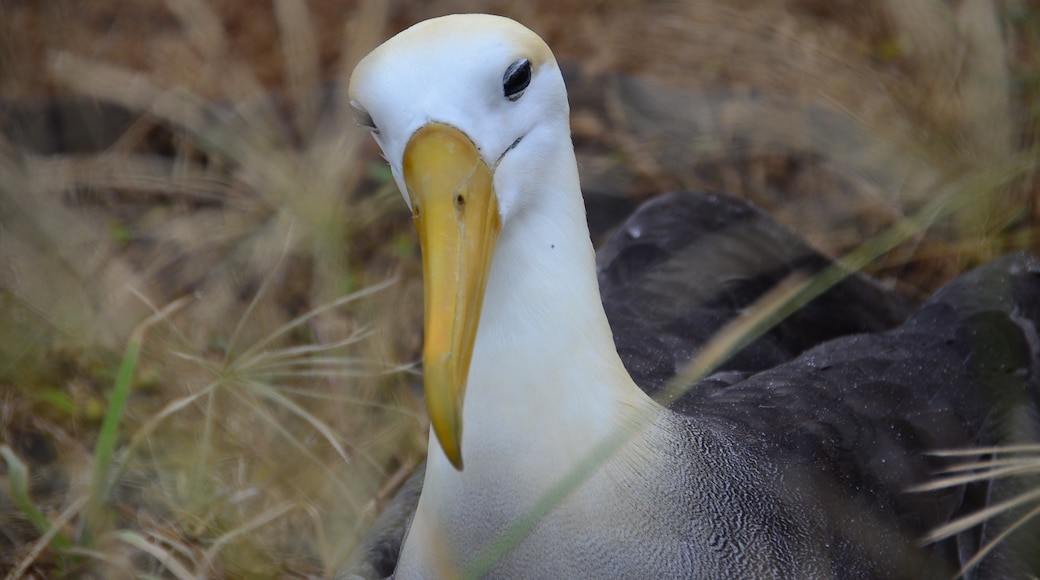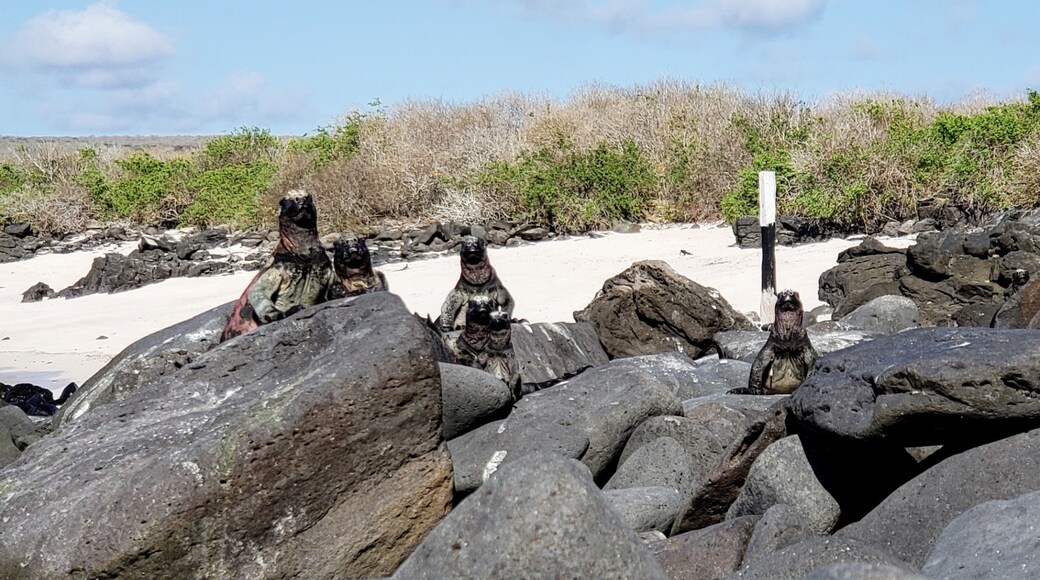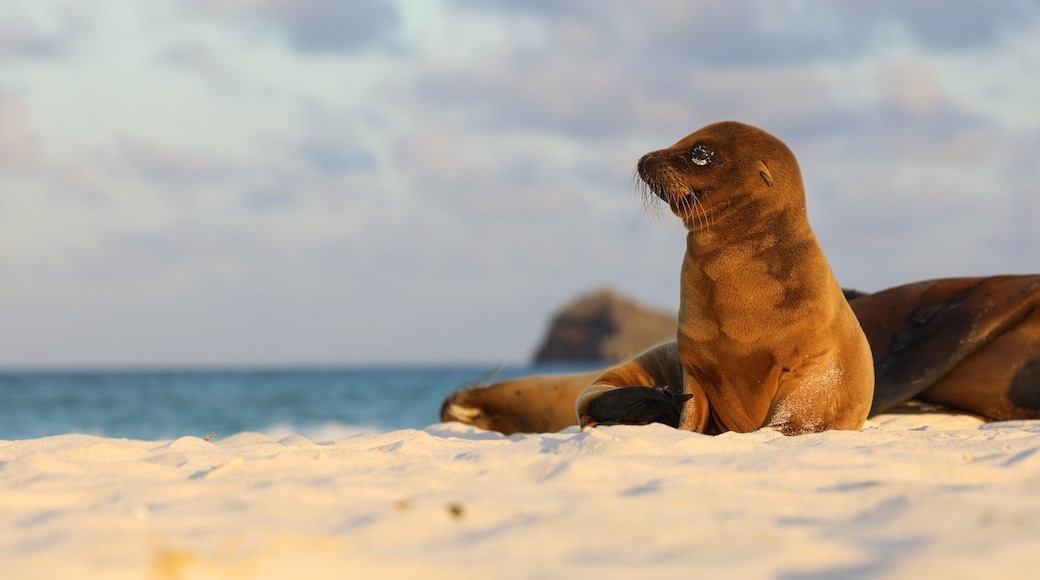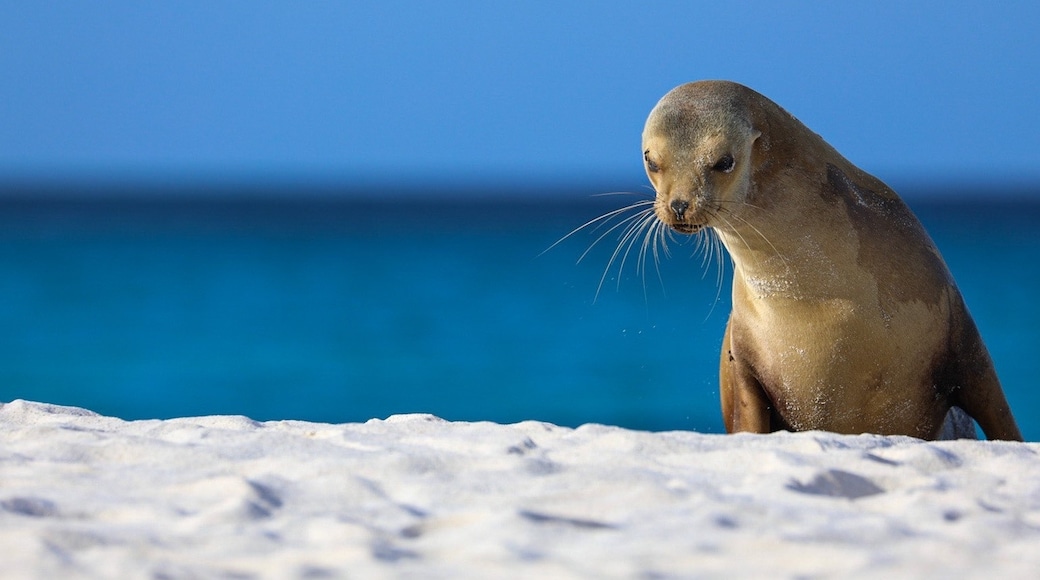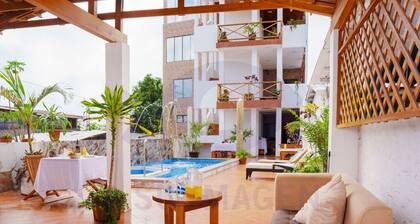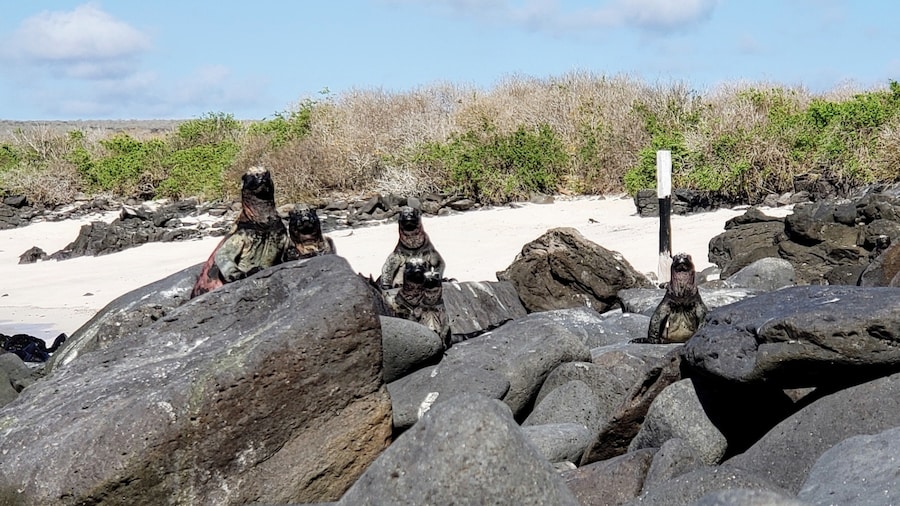Española Island (Isla Española) is the most southerly of the Galápagos Islands and a sanctuary for a mesmerizing array of wildlife. Also known as Hood Island, Española Island is a dry and flat shield volcano island. Geologists believe it to be 4 million years old, making it one of the oldest islands in the Galápagos. The island’s bays and cliffs provide a natural habitat for albatross, turtles and whales, among others.
The island has two visitor sites. One is Punta Suárez, a rocky headland teeming with endemic animal species. A colony of curious and friendly sea lions will greet you as you disembark at the boat landing. Follow a marked trail that climbs above the rugged cliffs and passes a powerful blowhole.
Spot crabs and lava lizards. Marvel at the marine iguanas, which turn shades of bright green and red during the mating season. See the Hood mockingbird, the biggest mockingbird of the islands, in addition to blue-footed boobies, Nazca boobies, red-billed tropicbirds and swallow-tailed gulls. From April to December look for the waved albatross performing its extravagant and boisterous mating ritual.
Travel by boat to Gardner Bay, a 1.2-mile (2-kilometer) long beach of powdery white sand on the island’s northern coast. Snap memorable shots of the sea lions that bask on the sands. Green sea turtles come to nest here from January to March. Swim in the crystal clear water and watch as sea lions glide around your legs.
For more adventure, go snorkeling at Gardner Island and Tortuga Rock, just offshore from Gardner Bay. You’ll share the water with more sea lions, sharks, turtles and fish such as bumphead parrotfish and king angelfish.
Reach Española Island by arranging a day tour from San Cristóbal Island and Santa Cruz IslandOpens in a new window. During the 2-hour journey whale sightings are sometimes possible.
